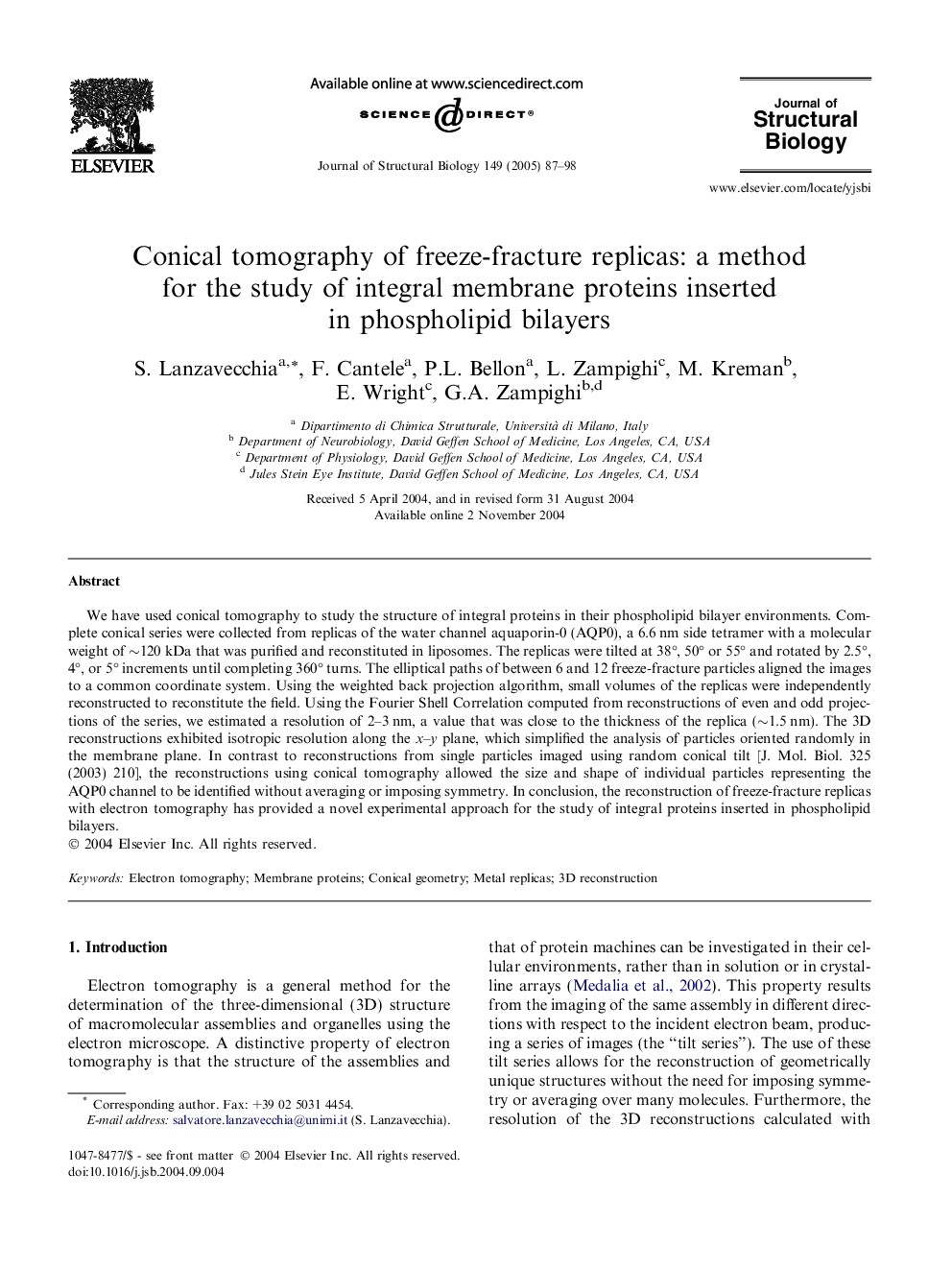| Article ID | Journal | Published Year | Pages | File Type |
|---|---|---|---|---|
| 9139135 | Journal of Structural Biology | 2005 | 12 Pages |
Abstract
We have used conical tomography to study the structure of integral proteins in their phospholipid bilayer environments. Complete conical series were collected from replicas of the water channel aquaporin-0 (AQP0), a 6.6 nm side tetramer with a molecular weight of â¼120 kDa that was purified and reconstituted in liposomes. The replicas were tilted at 38°, 50° or 55° and rotated by 2.5°, 4°, or 5° increments until completing 360° turns. The elliptical paths of between 6 and 12 freeze-fracture particles aligned the images to a common coordinate system. Using the weighted back projection algorithm, small volumes of the replicas were independently reconstructed to reconstitute the field. Using the Fourier Shell Correlation computed from reconstructions of even and odd projections of the series, we estimated a resolution of 2-3 nm, a value that was close to the thickness of the replica (â¼1.5 nm). The 3D reconstructions exhibited isotropic resolution along the x-y plane, which simplified the analysis of particles oriented randomly in the membrane plane. In contrast to reconstructions from single particles imaged using random conical tilt [J. Mol. Biol. 325 (2003) 210], the reconstructions using conical tomography allowed the size and shape of individual particles representing the AQP0 channel to be identified without averaging or imposing symmetry. In conclusion, the reconstruction of freeze-fracture replicas with electron tomography has provided a novel experimental approach for the study of integral proteins inserted in phospholipid bilayers.
Related Topics
Life Sciences
Biochemistry, Genetics and Molecular Biology
Molecular Biology
Authors
S. Lanzavecchia, F. Cantele, P.L. Bellon, L. Zampighi, M. Kreman, E. Wright, G.A. Zampighi,
